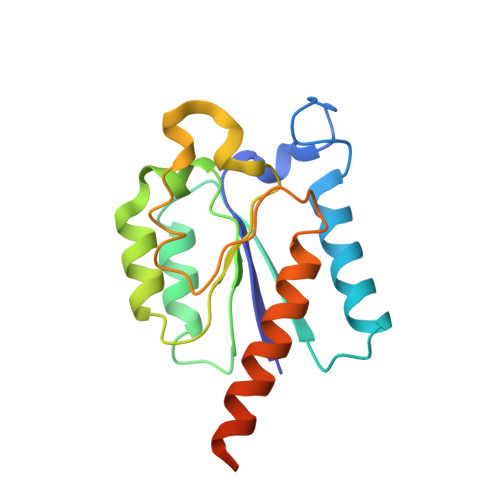Synthesis and biological evaluation of new nanomolar competitive inhibitors of Helicobacter pylori type II dehydroquinase. Structural details of the role of the aromatic moieties with essential residues.
Prazeres, V.F., Tizon, L., Otero, J.M., Guardado-Calvo, P., Llamas-Saiz, A.L., van Raaij, M.J., Castedo, L., Lamb, H., Hawkins, A.R., Gonzalez-Bello, C.(2010) J Med Chem 53: 191-200
- PubMed: 19911771
- DOI: https://doi.org/10.1021/jm9010466
- Primary Citation of Related Structures:
2WKS - PubMed Abstract:
The shikimic acid pathway is essential to many pathogens but absent in mammals. Enzymes in its pathway are therefore appropriate targets for the development of novel antibiotics. Dehydroquinase is the third enzyme of the pathway, catalyzing the reversible dehydratation of 3-dehydroquinic acid to form 3-dehydroshikimic acid. Here we present the synthesis of novel inhibitors with high affinity for Helicobacter pylori type II dehydroquinase and efficient inhibition characteristics. The structure of Helicobacter pylori type II dehydroquinase in complex with the most potent inhibitor shows that the aromatic functional group interacts with the catalytic Tyr22 by pi-stacking, expelling the Arg17 side chain, which is essential for catalysis, from the active site. The structure therefore explains the favorable properties of the inhibitor and will aid in design of improved antibiotics.
- Laboratorio de Quimica Organica (CSIC) y Departamento de Quimica Organica, Facultad de Quimica, Universidad de Santiago de Compostela, 15782 Santiago de Compostela, Spain.
Organizational Affiliation:

















